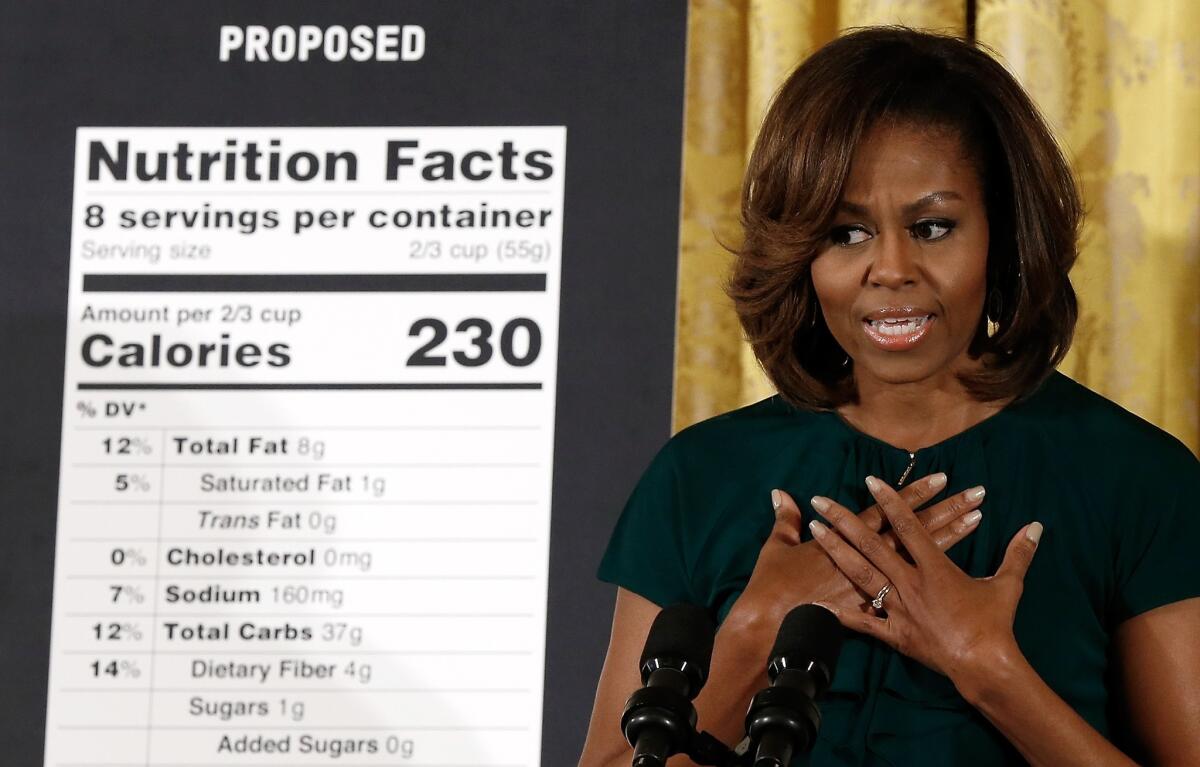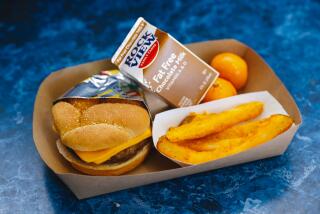From the FDA, a mixed bag of food labels

- Share via
The U.S. Food and Drug administration broke new ground in consumer protection when it required, more than 20 years ago, the now-familiar nutrition labels on virtually every bit of packaged food. Now, the labels are being revamped — in ways that have both benefits and downsides.
One of the most noticeable changes — and the least justifiable — would be the addition of a new sub-category: the number of grams of added sugar in the food, in addition to the existing measure of total sugar.
But why make such a change? Doctors and dietitians have declared that there is no nutritional difference between naturally occurring sugars such as fructose (in fruit juice) and the sugars that are added. All are processed the same way by the body; the only difference, some scientists have found, is when the sugar occurs in a whole, unprocessed food such as an apple.
The same isn’t true, though, of the sugar in soda or that in apple juice, though the proposed labels would imply otherwise. If people want to avoid added sugar, they just need to look at the ingredients list.
The FDA proposal is on firmer footing when it suggests listing the number of calories, the number of servings in a container and the size of each serving in more prominent type. The number of calories is the number most consumers want to check, so it should be easy to locate and read. Similarly, some shoppers think that the number of calories listed is the total for the package rather than for the serving size; they don’t notice that even a relatively small bag of chips might contain two or three servings, although that information is included on the label. A consumer who is not looking closely might think he is eating a 100-calorie snack when he is actually consuming more like 300 calories.
For the same reason, the FDA wants packages of food that might be consumed by one person at a sitting to be relabeled as a single serving, with the total calorie count. In other words, a 20-ounce bottle of soda, which most people probably drink at a sitting, could no longer be counted as 2 1/2 servings.
The goal is a good one: to keep consumers from being misled. But the proposed change on these smaller packages would mean that there are no real standards of what constitutes a serving. A 12-ounce can of Coke would be designated a single serving, as would a 20-ounce bottle of Coke — which is at least as confusing as the current system. Also, one of the chief obstacles in whittling the nation’s waistline is the great American food portion. Once labels say that 20 ounces of soda is a single serving, consumers might start thinking of that as a standard, reasonable size. They shouldn’t.
More to Read
Sign up for Essential California
The most important California stories and recommendations in your inbox every morning.
You may occasionally receive promotional content from the Los Angeles Times.










